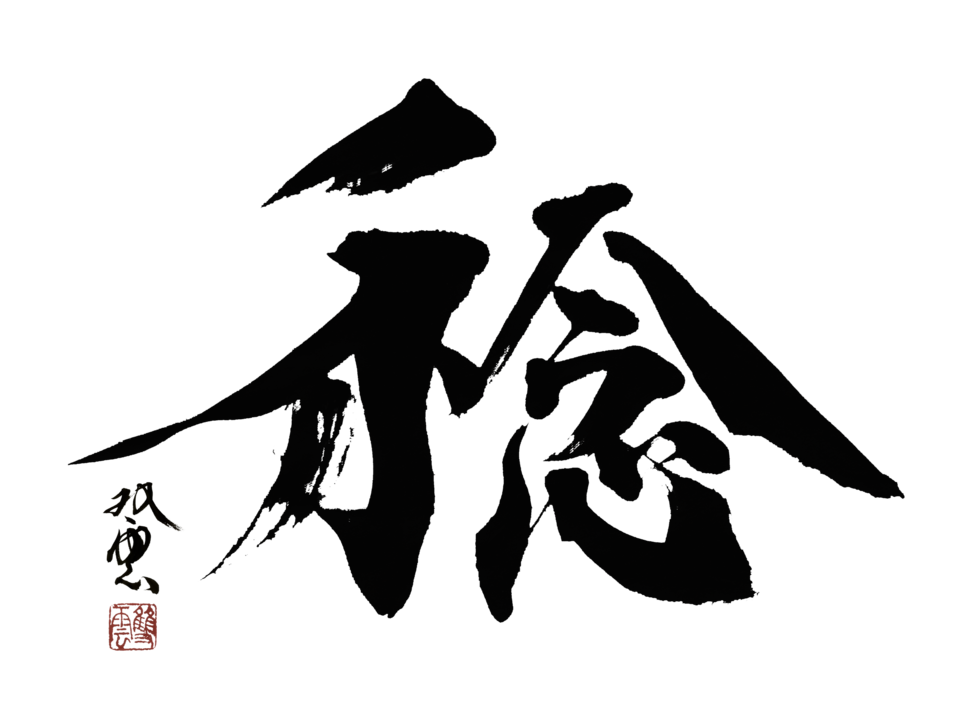稔 minoru
The character minoru ( 稔) consists of two elements. The left side of the character represents grain, and the right side expresses the idea of swelling. As a whole, the character refers to the swelling and ripening of grain, expressing the meaning “to bear fruit.”
Autumn is the harvest season for many crops, including rice, Japan’s staple food. Golden ears heavy with ripe grains can be seen swaying in the wind in rice paddies throughout the countryside. This typical autumn scene represents the fruit of farmers’ collaborative endeavors, which have continued in rural communities from generation to generation. And the harvest season is also the season of festivals, bringing people together to celebrate and give thanks for nature’s bounty. These matsuri, as they are called in Japanese, are living traditions, many with long histories.
Japanese agriculture now faces the challenge of an aging population of farmers and the demand for greater efficiency. Initiatives are underway to introduce new technologies and adopt new approaches so that the farmland can continue to minoru, producing more delicious food for all to enjoy.
How about visiting Japan this autumn? Here you can view traditional harvest scenes, experience time-honored festivals, and savor the fresh bounty of nature.































































































































